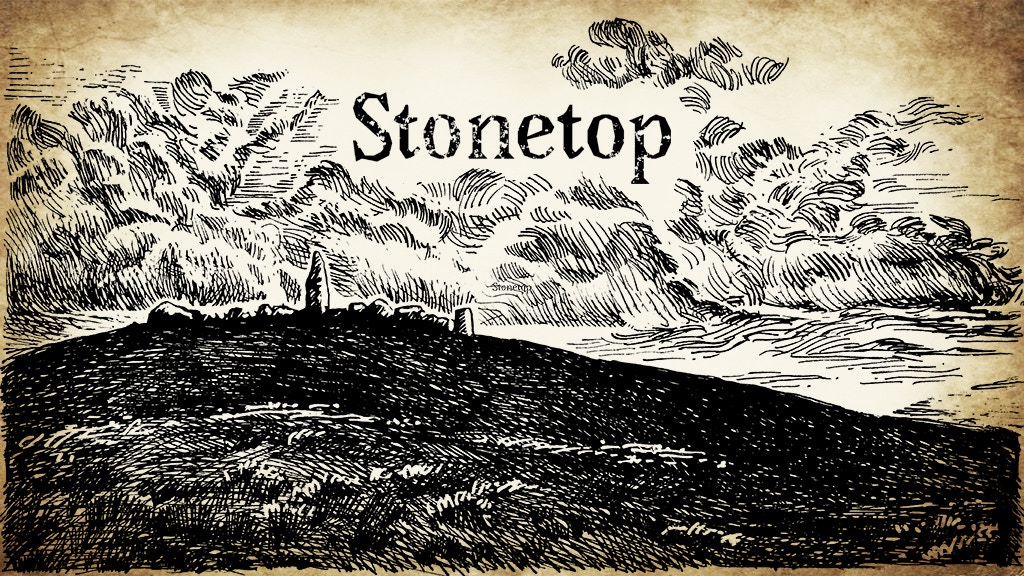Stonetop consists of two books, the second of which is unique in RPGs, to my knowledge. As I wrote in my review of Stonetop:
Book I, Stonetop, has the rules, including probably the best fantasy PbtA GMing advice out there…. Book II, The Wider World and Other Wonders, is an almanac of locales and creatures, full of unique beasts and places, but presented in a way so as to be immediately useful to the GM. I just recently read an RPG that spent pages discussing a race, their culture and outlook, reading like an encyclopedia entry and leaving me with no leverage. In contrast, Jeremy provides hooks that you can immediately use to improvise: names, random tables, questions to ask the players, dangers, and artifacts. The setting has a few key pillars of lore, with plenty of room for collaborative anti-canon world-building between them.
The current draft of Book II is 411 pages long, with over 119,000 words. Almanac sections are locations (e.g., “Barrier Pass”, “The Dread River”, “Whitefang Mountains”), deities (e.g., “Aratis, the Lawkeeper”, “Danu, the Earth Mother”), creatures (e.g., “Crinwin”, “The Things Below”), concepts (e.g., “Death and the Undying”, “Useful and Valuable Flora”), people (e.g., “The Forest Folk”, “Hillfolk”), and ancient forces (e.g., “The Forge Lords”, “The Makers”).
What makes the book unique is its focus on anti-canon, on providing prompts to support collaboratively creating the backstory of the world and procedurally generating the world—
- Questions – Lists of questions to ask the players, as details are invented together at the table: “What did you see [deep into the Flats] that no one quite believes?” “Which of you has seen a prairie fire up front and personal?” “When did crinwin last openly raid the village? What did they take?”
- Terrain and Discovery tables – A connected group of tables to procedurally generate areas traveled through with terrain, discoveries, encounters, and points of interest, sometimes with unique added tables depending on the specific entry: e.g., remnants of the Ruined Tower in the Flats, hillforts in the Northern Manmarch, a Green Lord ruin in Vor Svetelik.
- Dangers – Ideas for hazards and monsters, typically presented as lists rather than tables. (I wish these were tables, to keep up the procedural generation, rather than just sparks for inspiration.)
- Something interesting / Something useful – First, some background. Dungeon World’s Spout Lore move includes these instructions: “On a 10+, the GM will tell you something interesting and useful about the subject relevant to your situation. On a 7–9, the GM will only tell you something interesting—it’s on you to make it useful.” Stonetop renames and updates the move to “Know Things.” The almanac then offers over 40 different recommendations for the GM on things that are interesting or useful, alleviating what can otherwise be a challenging bit of improv. These recommendations often include asking specific questions of the players: “Something useful – many Hillfolk traditions stem from their time suffering under the Stone Lords and the Barrow-Builders, and the efforts required to throw off the yoke of those rulers. What’s one such tradition that you know of, and how can you use it to your advantage?”
Other common elements to each section—
- Impressions – Rather than paragraphs of boxed text to read, the impressions are bullets for you as GM to work into your descriptions, often calling on different senses: “carpet of last year’s grass, folded flat by wind and heavy snow,” “a damp chill in the wind, smell of rain and wet soil,” “soft crunch and pop underfoot,” and “mountains looming on the far horizon.”
- Hooks – “When you want to push the PCs into the field with a threat or an opportunity, it pays to prepare a hook.” Some example hooks from the entry for Lygos: “An old foe/rival/creditor of a PC (or an important NPC) comes calling. A southern antiquarian arrives, looking to excavate a specific Maker ruin (possibly one in Stonetop). Members of a persecuted mystery cult arrive from down South; if Stonetop won’t accept them, they take up residence in the Ruined Tower.”
PbtA games typically embrace an ethos of “Play to find out what happens” with an emphasis on improv rather than adventure modules. The Wider World and Other Wonders provides a model for the best of both worlds: vital support for the GM, without running any risk of railroading the players.
For a detailed example of me making use of Book II (and some other Lampblack & Brimstone resources), check out: Anti-Canon in Stonetop.
As I wrote in my review of Norse fantasy PbtA hacks in terms of what I now want to see, “Stonetop’s Book II has spoiled me: give me names, random tables, treasures, story hooks, questions to ask the players…” It’s a format I want to see more broadly adopted.
Jason Lutes, the publisher, has provided this excerpt from Book II for me to share: “The Flats.”
Back Stonetop for access to the current drafts of the PDFs.

